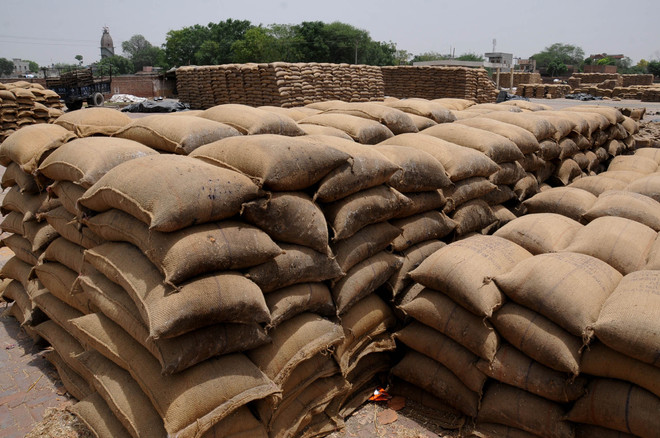Govt may resume wheat sales to check prices
By Zia Haq
The Union government may again sell wheat and rice from state granaries to bulk buyers like flour millers in excess of mandatory emergency reserves, as food can still be a “significant source” of price rise during 2024-25, an official said, citing a recent review by an interministerial panel on inflation.
A resumption of bulk sales in the open market through auctions will mean that millers, the largest wholesale buyers in grain markets, will keep off private traders because state inventories will be available at a lower price. This should drive down prices.
In 2023-24, the government sold nearly 10 million tonne of wheat through open auctions to cool prices of the grain, which had hit record highs due to two straight years of lower output.
The food ministry has approved the open-market sales scheme for cereals for 2024-25 effective April 1 till July 31, the official said, declining to be named. The Food Corporation of India, the federal agency that handles grains, will sell wheat at a minimum price of ₹ 2,275 a quintal, which is the minimum support price.
However, the government won’t start sales during active procurement in wheat producing states such as Punjab, Uttar Pradesh, Haryana, Rajasthan and Madhya Pradesh. The food ministry will hold a review of procurement and stocks to fix the reserve price of wheat for the remaining months of the financial year, the official said.
A bumper harvest of wheat, as is expected, is critical this year to replenish government inventories, which have plunged to a seven-year low after record sales in the open market to boost domestic supplies and curb prices.
Wheat inflation in the world’s second-largest grower, which had climbed to record highs in the aftermath of the Ukraine war, has moderated to about 5% on an annualised basis due to aggressive supply-side measures undertaken by the government. Despite lower output due to extreme weather over two straight cropping seasons, the government has avoided wheat imports, which attract a 40% duty.
The Food Corporation had about 9.4 million tonne of the grain at the start of March compared to nearly 11.5 million tonne in the same month last year. Current stocks are not much higher than the emergency reserve of about 7.6 million tonne the government must maintain as on April 1.
If inventories fall the buffer requirement, it will be for the first time since 2016 that the buffer norm for wheat will be breached. To ensure robust wheat procurement, the Union government has issued instructions to states to start procurement of wheat at minimum support prices from March 1, earlier than usual, and transfer payments to farmers’ accounts with 48 hours, another official said, seeking anonymity.
Output of wheat is set to be a record 112 million tonne in 2023-24, compared to the previous year’s 110 million tonne, according to the government’s projections. Wheat is sown in November and harvested during March-April. To meet its targets, the government hopes to procure more wheat from Uttar Pradesh, Rajasthan and Bihar, states where procurement has traditionally lagged.
This article has been republished from The Hindustan Times.

